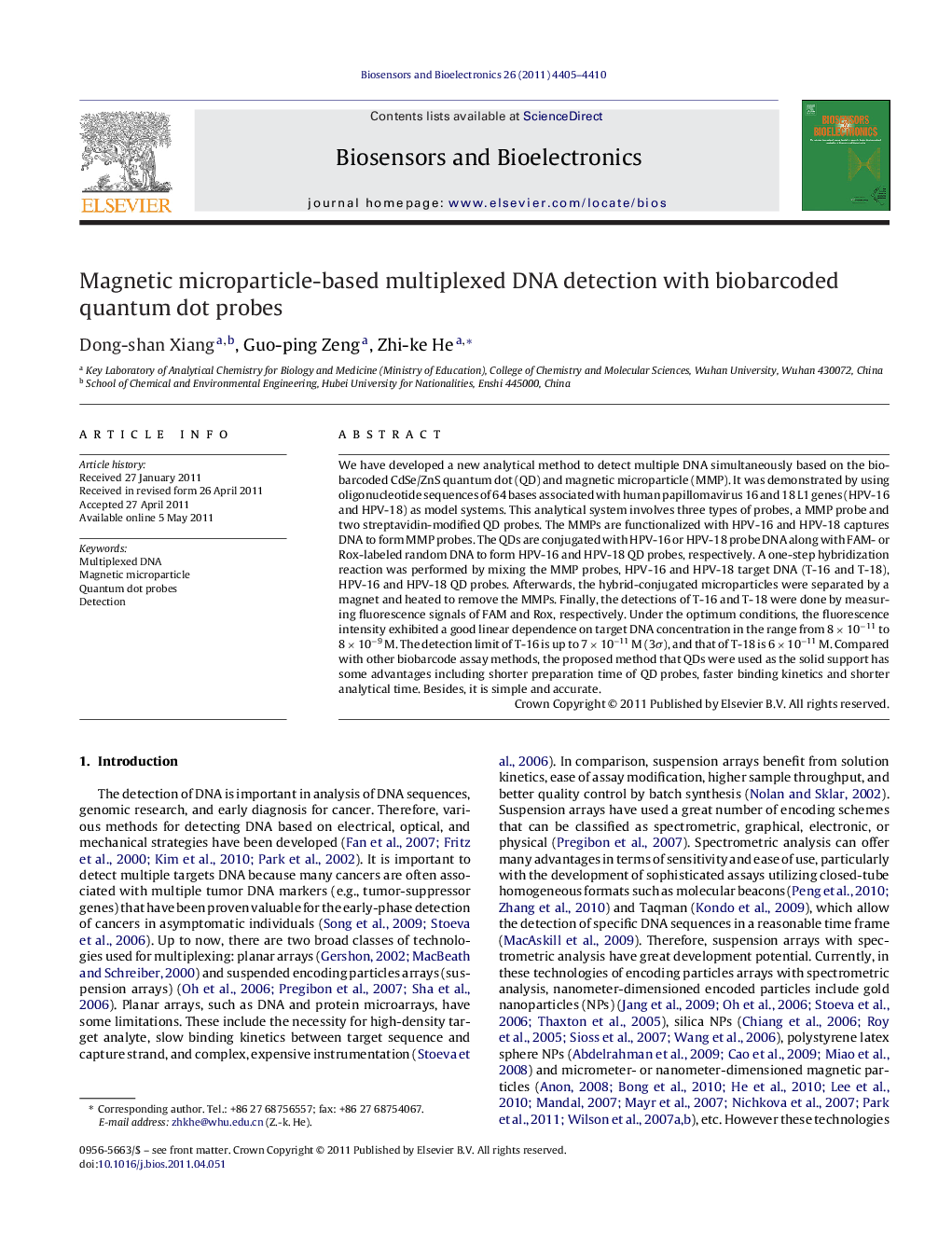| Article ID | Journal | Published Year | Pages | File Type |
|---|---|---|---|---|
| 867705 | Biosensors and Bioelectronics | 2011 | 6 Pages |
We have developed a new analytical method to detect multiple DNA simultaneously based on the biobarcoded CdSe/ZnS quantum dot (QD) and magnetic microparticle (MMP). It was demonstrated by using oligonucleotide sequences of 64 bases associated with human papillomavirus 16 and 18 L1 genes (HPV-16 and HPV-18) as model systems. This analytical system involves three types of probes, a MMP probe and two streptavidin-modified QD probes. The MMPs are functionalized with HPV-16 and HPV-18 captures DNA to form MMP probes. The QDs are conjugated with HPV-16 or HPV-18 probe DNA along with FAM- or Rox-labeled random DNA to form HPV-16 and HPV-18 QD probes, respectively. A one-step hybridization reaction was performed by mixing the MMP probes, HPV-16 and HPV-18 target DNA (T-16 and T-18), HPV-16 and HPV-18 QD probes. Afterwards, the hybrid-conjugated microparticles were separated by a magnet and heated to remove the MMPs. Finally, the detections of T-16 and T-18 were done by measuring fluorescence signals of FAM and Rox, respectively. Under the optimum conditions, the fluorescence intensity exhibited a good linear dependence on target DNA concentration in the range from 8 × 10−11 to 8 × 10−9 M. The detection limit of T-16 is up to 7 × 10−11 M (3σ), and that of T-18 is 6 × 10−11 M. Compared with other biobarcode assay methods, the proposed method that QDs were used as the solid support has some advantages including shorter preparation time of QD probes, faster binding kinetics and shorter analytical time. Besides, it is simple and accurate.
